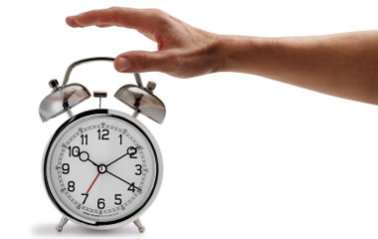On Nov. 6, 2022, daylight saving time will come to an end, and those in most of the U.S. will “fall back” to standard time by setting clocks back one hour. These seasonal time changes could soon be a thing of the past. In March, the U.S. Senate passed the Sunshine Protection Act, which would make daylight saving time permanent across the country, and the House of Representatives is currently evaluating the proposal. According to the experts at the American Academy of Sleep Medicine (AASM), the U.S. should instead adopt permanent standard time for the public’s overall health and safety.
Standard Time vs. Daylight Saving Time
While Hawaii and Arizona operate on a single time zone determined by state legislation, seasonal time changes are currently set by federal law and observed for the rest of the U.S. The bi-annual time change falls into two distinct periods:
- Standard time is the period of the year between the fall (November) and spring (March), which is based on the position of the earth relative to the sun.
- Daylight saving time is the period between spring and fall, when clocks in most parts of the U.S. “spring forward” one hour ahead of standard time, resulting in a lost hour of sleep, more darkness in the morning and more light in the evening.
Evidence Supports Adoption of Permanent Standard Time
The AASM implores the House of Representatives to evaluate current evidence, which supports the adoption of year-round standard time for these key reasons:
- Standard time matches our body’s internal clock. The daily cycle of natural light and darkness is the most powerful timing cue to synchronize our body’s internal clock. When we receive more light in the morning and darkness in the evening, our bodies and nature are better aligned, making it easier to wake up for our daily activities and easier to fall asleep at night. Daylight saving time disrupts our internal clock, leading to sleep loss and poor sleep quality, which in turn lead to negative health consequences.
“Daylight saving time disrupts the body’s natural circadian rhythms and impacts sleep,” said AASM President Jennifer Martin, a licensed clinical psychologist. “Standard time provides a better opportunity to get the right duration of high-quality, restful sleep on a regular basis, which improves our cognition, mood, cardiovascular health, and overall well-being.”
- Standard time ensures more light and promotes safety in the morning. For morning commuters and children heading off to school, dark mornings caused by permanent daylight saving time pose numerous safety concerns. This would be especially problematic during the winter months when days grow increasingly shorter. More darkness during early morning commutes may also contribute to an increased risk of traffic fatalities, according to studies.
- Permanent daylight saving time would disproportionately affect those in the northern part of the country. If the U.S. adopted permanent daylight saving time, some parts of Montana, North Dakota and Michigan would not see sunrise until after 9:30 a.m. during the winter months. More populous cities would be impacted by darker mornings as well – with permanent daylight saving time, sunrise wouldn’t occur until 8:20 a.m. in New York City in January. In Los Angeles, sunrise in January would be at almost 8 a.m., and in Minneapolis, sunrise would be at nearly 9 a.m.
- The U.S. has tried permanent daylight saving time before, and the results were disastrous. Amid a nationwide energy crisis, the U.S. attempted to adopt permanent daylight saving time in 1973, when President Nixon signed a bill into law aimed at reducing the nation’s energy consumption. During the first winter, complaints about prolonged darkness in the morning were rampant. Parents also had safety concerns because their children had to walk to school or wait for the bus in the dark. While the daylight saving time experiment was intended to last two years, it was so unpopular that Congress reverted the nation to standard time in the fall of 1974 after only 8 months.
- Seasonal time changes are dangerous overall. Misalignment caused by seasonal time changes has been linked to dangerous health and safety consequences, including an increased risk of stroke and hospital admissions, and increased production of inflammatory markers, one of the body’s responses to stress. Additional risks include increased medical errors, cardiovascular events and mood disturbances. One study found a reduction in the rate of cardiovascular events during standard time in particular, suggesting that the chronic effects of daylight saving time may lead to a higher risk of adverse health problems when compared with standard time.
“By eliminating the seasonal time change and adopting standard time permanently on a national scale, we can all reap the benefits of better overall health and an enhanced sense of safety for ourselves and our families,” Martin concluded.
Visit SleepEducation.org for more information on sleep disorders and actionable sleep tips.
###
About the American Academy of Sleep Medicine
Established in 1975, the AASM advances sleep care and enhances sleep health to improve lives. The AASM has a combined membership of 11,000 accredited sleep centers and individuals, including physicians, scientists and other health care professionals who care for patients with sleep disorders. As the leader in the sleep field, the AASM sets standards and promotes excellence in sleep medicine health care, education and research.





